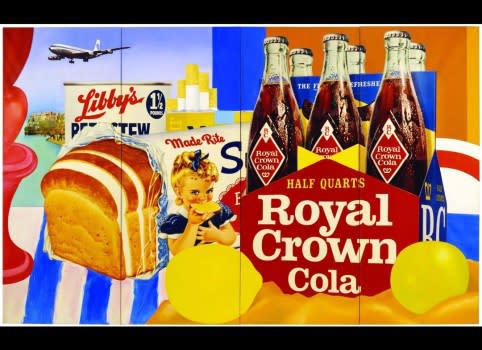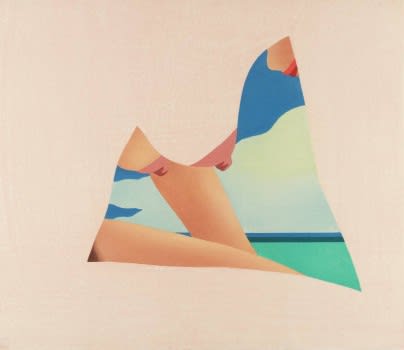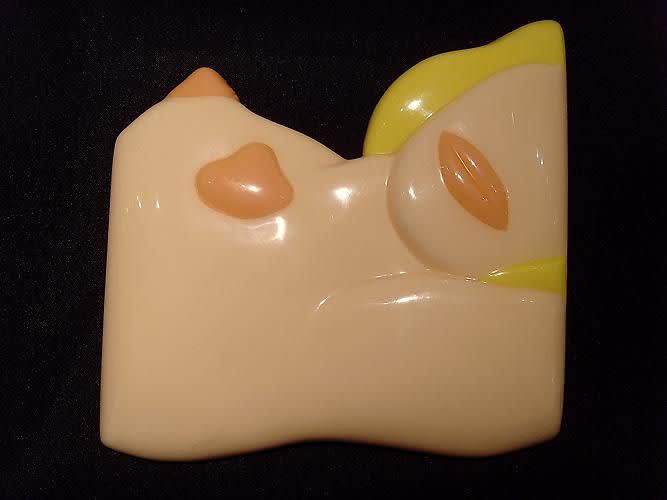Of the American Pop Artists that we feature at Vertu, it’s Tom Wesselmann’s Pop Art that consistently ranks high among our personal favorites. Time and time again, Wesselmann delights us – embracing the beauty and eroticism of the female form – exploring a wide variety of media and techniques – tackling works of enormous scale – and paying homage to other masters – all with incredible elegance.
Wesselmann’s place among Pop Art superstars like Warhol, Johns and Lichtenstein is most certainly framed by his own relationship to the art movement. It’s well-known that Tom Wesselmann did not like being labeled a Pop Artist. Yet, it’s hard to imagine that his early 1960’s “Still Life” realistic works featuring consumer goods and assorted American icons would be considered anything but Pop Art. Nonetheless, Wesselmann did manage to set himself apart, perhaps most notably by the manner in which he built his career.
While Andy Warhol and Roy Lichtenstein continuously gravitated toward powerful commercial icons, by the mid to late 60’s, Wesselmann was moving away from commercial subjects, toward the nudes and seascapes that inspired him most. Certainly, if Wesselmann did indeed move through the Pop Art movement, he nonetheless adopted elements of the style – the broad lines and bold color palette most noticeably. Though Wesselmann stated that his work was not intended as social commentary, the fact that he was a New York artist pushing boundaries certainly contributed to his being labeled a Pop Artist.
When most collectors think of Tom Wesselmann, his depiction of the nude form is first and foremost. Wesselmann’s talent for capturing erotic elements of the female form is perhaps what most prominently separates him from the crowd. At a time when Pop Art notoriously depicted images devoid of emotion, Wesselmann captured the sexiness of shapely breasts, accentuated nipples, lips, legs, torsos and genitals. For some Wesselmann collectors, the sexually charged pieces are simply too bold. For others, these pieces hit the mark, and are synonymous with the free and evocative style that is purely Tom Wesselmann.
Tom Wesselmann’s Drop-Out series of works are among our favorites. Creating in the negative space − around breasts, legs, torsos and seascapes − the artist created works in which the background, along with the viewer’s mind, complete it. As with many of his works, vibrant colors and beautiful lines of the drop outs conjure thoughts of Henri Matisse, whose influence was prevalent throughout so many Wesselmann pieces.
Wesselmann’s creativity manifested itself in assorted shapes, textures and techniques throughout his career. Laser-cut steel versions of Wesselmann seascapes and vacuum formed plastic nudes are among the most well known non-print media used. Wesselmann collectors are often intrigued by the multiple versions of the artist’s vision. It’s easy to understand why one may favor the artist’s loose scribbled style, while another prefers a more detailed version of the same subject. For many, the joy is in discovering a beautiful theme deployed so many different ways, created in assorted shapes, sizes, media and techniques.
Another appealing aspect of Wesselmann is the artist’s tributes to other masters by way of inclusion. Monica Sitting with Mondrian, Still Life with Liz (Warhol), Monica Nude with Cezanne and Sunset Nude with Matisse Odalisque are all excellent examples.
If, like us, you are passionate about the works of Tom Wesselmann, please stop in to our Boca Raton gallery. We are most interested in hearing about your experiences with the artist’s works, and if you are seeking a particular work, please contact us and we’ll do our best to help you source it.






